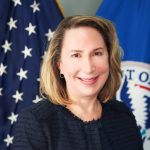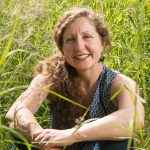Trump Wants to Erase Protections in Alaska’s Tongass National Forest, a Storehouse of Carbon
The old-growth rainforest is a major North American carbon sink. The Trump administration is moving to lift a Clinton-era ban on logging there.
By Sabrina Shankman
Originally published Oct 16, 2019 at InsideClimate News
The Trump Administration wants to allow logging in previously off-limit areas of Alaska’s Tongass National Forest, the U.S. Forest Service announced Tuesday, a move that could turn one of the nation’s largest carbon sinks into a source of new climate-changing emissions.
The old-growth temperate rainforest contains trees that are centuries old and play a crucial role in storing carbon. In a state that is synonymous with oil production, the Tongass National Forest represents the potential for natural solutions to help combat the climate crisis.
A 9.4-million acre swath of the Tongass has been protected under a Clinton-era requirement called the Roadless Rule, which safeguarded 58 million acres of undeveloped national forest lands from roadbuilding, logging and mineral leasing. But the Tongass has long been an area of hot dispute.
The Forest Service is now moving to exempt the rainforest — and make tens of thousands of old-growth acres available to logging.
“The Tongass National Forest stores more carbon removed from the atmosphere than any other national forest in the country,” said Josh Hicks, campaign manager at The Wilderness Society. “By seeking to weaken the Roadless Rule’s protections, the Forest Service is prioritizing one forest use — harmful logging— over mitigating climate change, protecting wildlife habitat, and offering unmatched sight-seeing and recreation opportunities found only in southeast Alaska.”
In August, Trump ordered Agriculture Secretary Sonny Perdue to exclude the area from the Roadless Rule. The draft environmental impact statement — expected later this week — will aim to do just that, according to a press release issued on Tuesday that describes the administration’s plan. If enacted, it would allow roads to be built throughout the now-protected area, and it would convert 165,000 old-growth acres and 20,000 young-growth acres previously identified as unsuitable timber lands to suitable timber lands.
The Alaskan delegation had been pushing for a relaxation of the rule, arguing that the prohibition on developing that area negatively affects the state’s ability to harvest timber, develop minerals and expand energy projects. “I thank President Trump, Secretary Perdue, and the team at the Forest Service for their hard work to reach this point — and for their continued efforts to restore reasonable access to the Tongass National Forest,” said Senator Lisa Murkowski (R-Alaska).
Protections for roughly 5.7 million acres of the forest designated as wilderness lands will remain intact.
A Major Carbon Sink
From a climate perspective, the plan could have global implications.
“The longer those trees are out there, the longer they have been absorbing carbon from the atmosphere and holding onto it — sequestration. That results in excess carbon that the plants store over time,” said Dominick DellaSala, the chief scientist at the Geos Institute in Oregon, a nonprofit that studies climate solutions. “In the case of an old-growth forest, some of those trees have been out there for 400, 500 years, absorbing and storing carbon and helping to keep the planet cool.”
The ancient trees in the Tongass store at least 8 percent of the total carbon absorbed by all national forests in the lower 48 states, DellaSala said. “When we clear-cut a forest, most of the carbon is put back into the atmosphere,” he said.
A report released by the United Nations one year ago found that in order to keep global warming below 1.5°C, the world will need to find ways to remove carbon from the atmosphere. Part of that requires the development and scaling of new technologies. But natural solutions must play a role, too, the report found.
Trump’s action is “going to put more carbon dioxide into the atmosphere at a time when we need to be drastically reducing emissions and getting off of fossil fuels and keeping carbon stores in places like the Tongass,” DellaSala said.
History on Their Side
The Tongass National Forest represents the latest step in the Trump administration’s efforts to open up public lands to industry, which have led to clashes with environmental groups.
Those fights are well underway elsewhere in Alaska. The administration is working to allow drilling in the Coastal Plain of the Arctic National Wildlife Refuge and in new areas of the National Petroleum Reserve. It is trying to ease protections in salmon streams and to allow open pit copper and gold mining at Pebble Mine, on the shores of Bristol Bay.
In the Tongass, as with the other areas in Alaska, attorneys representing environmental groups are closely watching the Trump administration’s moves to see if there are opportunities to sue.
“The agency will have to issue a final impact statement, which is expected next year,” said Eric Jorgensen, Earthjustice managing attorney in Juneau.”Then at that point, there could be challenges to the rule so we and others will be giving it the closest scrutiny. We don’t think the agency will be able to marshal the arguments to justify the exemption.”
Environmental groups will have history on their side, Jorgensen said.
President George W. Bush tried unsuccessfully to overturn the Roadless Rule’s application to the Tongass. “We filed a lawsuit with others challenging that exemption and the district court in Alaska, and ultimately the 9th circuit court of appeals rejected the decision, holding that the agency has not justified its change in position,” Jorgensen said.
Join the Cornerstone Network
Sign up with a monthly donation and become part of our Cornerstone Network. Network members recieve the messages posted here first, delivered directly to your inbox. Your ongoing support is the foundation of our work.

 Samantha Medlock is President of Climate Risk Advisors, helping communities and organizations advance equity, sustainability, and resilience. Her career began chasing floods as a local official in Texas Flash Flood Alley—a hands-on experience that still shapes her approach to climate and disaster risk management.
Samantha Medlock is President of Climate Risk Advisors, helping communities and organizations advance equity, sustainability, and resilience. Her career began chasing floods as a local official in Texas Flash Flood Alley—a hands-on experience that still shapes her approach to climate and disaster risk management.
 Arsum is the Senior Adaptation and Coastal Resilience Specialist for the National Wildlife Federation’s Southcentral Region. In this role, she advances climate adaptation efforts, with a focus on nature-based approaches to address the impacts of climate change and extreme events across the Gulf region. She has authored and co-authored numerous publications on climate impact assessments and adaptation solutions. Additionally, she regularly participates in state-based coastal resilience and hazard mitigation planning across the Gulf, collaborating with regional and local stakeholders.
Arsum is the Senior Adaptation and Coastal Resilience Specialist for the National Wildlife Federation’s Southcentral Region. In this role, she advances climate adaptation efforts, with a focus on nature-based approaches to address the impacts of climate change and extreme events across the Gulf region. She has authored and co-authored numerous publications on climate impact assessments and adaptation solutions. Additionally, she regularly participates in state-based coastal resilience and hazard mitigation planning across the Gulf, collaborating with regional and local stakeholders. Frank is the former President of the Reinsurance Association of America. Frank currently serves on the Advisory Board of the OECD’s International Network for the Financial Management of Large-Scale Disasters, the RAND Center on Catastrophic Risk Management and Compensation, and the University of Cincinnati’s Carl H. Lindner III Center for Insurance and Risk Management Advisory Board.
Frank is the former President of the Reinsurance Association of America. Frank currently serves on the Advisory Board of the OECD’s International Network for the Financial Management of Large-Scale Disasters, the RAND Center on Catastrophic Risk Management and Compensation, and the University of Cincinnati’s Carl H. Lindner III Center for Insurance and Risk Management Advisory Board. Jim is a multilingual world traveler. Based in Bavaria during the 1970s, Jim spent most of this period in India, Afghanistan and Nepal, where he founded and operated a charitable medical clinic serving Tibetan Refugees. He settled in Oregon in 1983 on a forested ranch in the Umpqua National Forest.
Jim is a multilingual world traveler. Based in Bavaria during the 1970s, Jim spent most of this period in India, Afghanistan and Nepal, where he founded and operated a charitable medical clinic serving Tibetan Refugees. He settled in Oregon in 1983 on a forested ranch in the Umpqua National Forest. Dr. Micah Hahn is an Associate Professor of Environmental Health in the Institute for Circumpolar Health Studies at the University of Alaska-Anchorage. She received her joint PhD in Epidemiology / Environment and Resources from the University of Wisconsin-Madison and her MPH in Global Environmental Health from Emory University. Subsequently, she was a postdoctoral fellow for the CDC Climate and Health Program, and in this position worked collaboratively with the CDC Division of Vector-borne Diseases and the National Center for Atmospheric Research. Her research focuses on understanding the health impacts of climate change and working with communities to develop locally-relevant adaptation and resilience-building strategies. Dr. Hahn is also on the Management Team of the Alaska Climate Adaptation Science Center.
Dr. Micah Hahn is an Associate Professor of Environmental Health in the Institute for Circumpolar Health Studies at the University of Alaska-Anchorage. She received her joint PhD in Epidemiology / Environment and Resources from the University of Wisconsin-Madison and her MPH in Global Environmental Health from Emory University. Subsequently, she was a postdoctoral fellow for the CDC Climate and Health Program, and in this position worked collaboratively with the CDC Division of Vector-borne Diseases and the National Center for Atmospheric Research. Her research focuses on understanding the health impacts of climate change and working with communities to develop locally-relevant adaptation and resilience-building strategies. Dr. Hahn is also on the Management Team of the Alaska Climate Adaptation Science Center. Michael is a former Founding Principal of Resilient Cities Catalyst, a global non-profit helping cities and their partners tackle their toughest challenges. He is currently the Executive Director of Climate Resilience Academy at the University of Miami.
Michael is a former Founding Principal of Resilient Cities Catalyst, a global non-profit helping cities and their partners tackle their toughest challenges. He is currently the Executive Director of Climate Resilience Academy at the University of Miami. Dr. Quintus Jett is a consultant, educator, and strategist for public causes. He has a doctorate in Organizations & Management from Stanford University, and a two-decade faculty career which spans schools, departments, and programs of business, engineering, liberal studies, divinity, and public and nonprofit management. Following Hurricane Katrina in 2005, Dr. Jett launched a volunteer project in New Orleans, which enlisted residents, students from over a dozen colleges and universities, and hundreds of others to field map the city’s Gentilly district, Lower Ninth Ward, and New Orleans East. Dr. Jett is an innovator in higher education, bridging the divide between academic research and the other priorities of the modern university, including student access and diversity, community engagement, and providing foundations for life-long learning in today’s rapidly changing world.
Dr. Quintus Jett is a consultant, educator, and strategist for public causes. He has a doctorate in Organizations & Management from Stanford University, and a two-decade faculty career which spans schools, departments, and programs of business, engineering, liberal studies, divinity, and public and nonprofit management. Following Hurricane Katrina in 2005, Dr. Jett launched a volunteer project in New Orleans, which enlisted residents, students from over a dozen colleges and universities, and hundreds of others to field map the city’s Gentilly district, Lower Ninth Ward, and New Orleans East. Dr. Jett is an innovator in higher education, bridging the divide between academic research and the other priorities of the modern university, including student access and diversity, community engagement, and providing foundations for life-long learning in today’s rapidly changing world. Scott is Monfort Professor of Atmospheric Science at Colorado State University. He has written about 100 publications in the peer-reviewed climate literature, is a former editor of the Journal of Climate, and served for five years as founding Science Chair of the North American Carbon Program.
Scott is Monfort Professor of Atmospheric Science at Colorado State University. He has written about 100 publications in the peer-reviewed climate literature, is a former editor of the Journal of Climate, and served for five years as founding Science Chair of the North American Carbon Program. Linda has many years of experience in disaster preparedness and resilience. She has been an elected official on the Linn County Iowa Board of Supervisors, Chair of the Metropolitan Planning Organization, the East Central Iowa Council of Governments, the statewide Mental Health Developmental Disability and the Linn County Board of Health. Langston is a former president of the National Association of Counties (2013-2014).
Linda has many years of experience in disaster preparedness and resilience. She has been an elected official on the Linn County Iowa Board of Supervisors, Chair of the Metropolitan Planning Organization, the East Central Iowa Council of Governments, the statewide Mental Health Developmental Disability and the Linn County Board of Health. Langston is a former president of the National Association of Counties (2013-2014). Ken works with families and organizations as a mediator, organizational consultant, trainer and facilitator. Along with his passion for helping people prepare for and reduce climate change, Ken also volunteers as a mediator through Mediation Works and is passionate about supporting youth through mentoring with Boys to Men of Southern Oregon.
Ken works with families and organizations as a mediator, organizational consultant, trainer and facilitator. Along with his passion for helping people prepare for and reduce climate change, Ken also volunteers as a mediator through Mediation Works and is passionate about supporting youth through mentoring with Boys to Men of Southern Oregon. Matthew is a retired high school teacher who was once honored as Oregon High School Social Studies Teacher of the Year. Before his teaching career he was in the restaurant business in Portland. He is also a lawyer who has been a member of the Oregon State Bar Association since 1980.
Matthew is a retired high school teacher who was once honored as Oregon High School Social Studies Teacher of the Year. Before his teaching career he was in the restaurant business in Portland. He is also a lawyer who has been a member of the Oregon State Bar Association since 1980. Andrea is the Resilience Policy Advisor for the North Carolina Office of Recovery and Resiliency. She works across state agencies and with local governments to increase the state’s resilience to the impacts of climate change.
Andrea is the Resilience Policy Advisor for the North Carolina Office of Recovery and Resiliency. She works across state agencies and with local governments to increase the state’s resilience to the impacts of climate change.